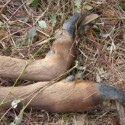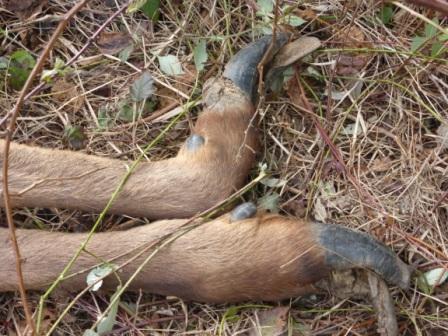
Herbicides Linked to Chemically Induced Endocrinopathic Laminitis in Elk
Authored by Krystal Davies
I believe I understand why the elk in southwest Washington are being affected by the mysterious hoof disease, namely hoof rot. I have credible evidence and can provide a plausible diagnosis, source of disease, a detailed route and manifestation of the pathogen, as well as a cure. My findings also link Leptospirosis, Treponema Pallidum, numerous other bacterial infections, and the use of pesticides and herbicides into one, highly interconnected, evidence based theory. The hepatic selenium and copper deficiencies discovered by Washington State University will also play an important role in returning the elk to a healthy state. My findings suggest that all of the current theories presented play an important role in the health of our local elk herds.
First, a little about myself. I am a farrier and have been studying equine hooves for over a decade. I specialize in the treatment and prevention of pathologies, including laminitis. Currently my efforts are being steered toward the local elk. But this runs deeper and a little more personal for me and my family. I have been controlling for known causes of hoof diseases in my own personal horses. However, since moving my little herd to Mt. Pleasant, in Cowlitz County, I’ve noticed a steady decline in their hoof health. They are showing subclinical signs of laminitis. This has led me to dig deeper into the situation and eventually brought me to research the local elk’s mysterious hoof disease. In my opinion the elk are being affected by the same thing as my horses as the signs and symptoms are strikingly identical to laminitis.


